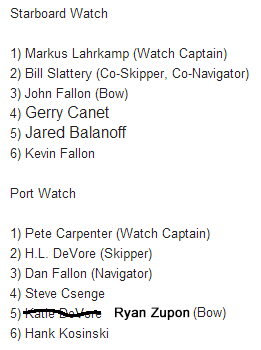Nice work TEAM! 2nd in class and 7th overall….AND we know exactly the few mistakes we made that kept us just out of first in class and even higher in the fleet!
—————————————————–
The 2014 Block Island Race is upon us! The race begins on FRIDAY, May 23rd. Dock Call will be FRIDAY MORNING at 10am at McMichael’s 447 East Boston Post Road.


